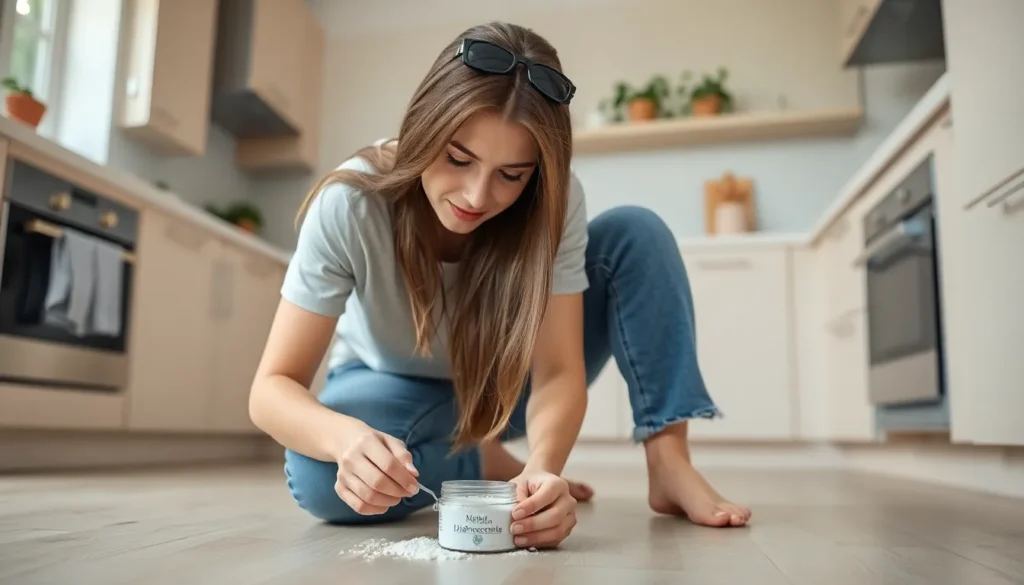Table of Contents
TogglePicture this: you’re lounging on the couch, enjoying a well-deserved break, when suddenly a rogue cockroach decides to audition for a horror movie right in front of you. It’s enough to make anyone jump up and scream! But before you reach for that can of chemical warfare, consider the wonders of at-home pest control.
Overview of At Home Pest Control
At-home pest control focuses on effective solutions that prioritize safety and practicality. First, individuals can utilize natural remedies like diatomaceous earth and essential oils to deter pests. Each option offers a chemical-free alternative that minimizes health risks.
Secondly, proper sanitation practices play a crucial role. Regularly cleaning surfaces and sealing food can significantly reduce pest attraction. Many pests thrive in unkempt areas, making cleanliness essential for effective control.
Thirdly, sealing entry points is vital in keeping pests out. Checking for cracks, gaps, and holes in walls and foundations prevents unwanted visitors. An ounce of prevention saves considerable time and effort in the long run.
Additionally, traps provide a direct method for capturing pests. Sticky traps and bait stations can be strategically placed in areas where pests are most active. These traps offer a visible indication of pest activity that can guide further action.
Moreover, using barriers is an effective approach. Installing screens on windows and doors deters insects from entering living spaces. Such physical barriers complement other pest control measures.
Finally, staying informed about local pest behaviors aids in anticipating and managing infestations. Understanding seasonal patterns can help in determining the best times for preventative measures.
Employing these at-home pest control methods cultivates a safer, healthier living environment while reducing reliance on harsh chemicals that pose health risks.
Types of Common Pests

Understanding common pests can help you implement effective at-home solutions. This section explores two major categories: insects and rodents.
Insects
Ants often invade kitchens, seeking food sources. Cockroaches thrive in warm, humid environments. Flies carry bacteria and are attracted to organic waste. Moreover, spiders, while generally harmless, can trigger phobias in some. Termites pose a significant threat to wooden structures, causing extensive damage if left unchecked. Each of these insects requires specific control methods that are effective and safe for home use.
Rodents
Rats and mice frequently enter homes in search of shelter and food. They can cause substantial damage by gnawing on wires and insulation. Additionally, these rodents can contaminate food sources with droppings. Implementing traps or using natural deterrents helps keep them at bay. Regularly checking for any signs of their presence, like droppings or nesting materials, is crucial. Sealing entry points can significantly reduce the risk of rodent infestation.
At Home Pest Control Methods
Effective at-home pest control methods create a safer living space. Both chemical solutions and natural remedies contribute to managing infestations.
Chemical Solutions
Chemical solutions offer targeted approaches for pest control. Various over-the-counter insecticides and rodenticides provide immediate results. Brands like Ortho, Raid, and Hot Shot deliver effective formulations for specific pests. Users must follow label instructions to ensure safe use. Environmental protection agencies recommend caution, especially in homes with pets and children. Proper ventilation during application reduces potential risks. It’s crucial to store chemicals securely to prevent accidental exposure.
Natural Remedies
Natural remedies promote pest control without harsh chemicals. Diatomaceous earth works effectively against insects by dehydrating them. Essential oils, such as peppermint and lavender, deter a range of bugs with pleasant scents. Traps with soapy water attract and kill flying insects. Borax serves as an insecticide when used carefully and sprinkled in high-traffic areas. Homemade sprays with vinegar and water help repel ants and other pests. Regular cleaning and good sanitation practices work alongside these methods to enhance prevention efforts.
Preventive Measures
Preventive measures play a crucial role in at-home pest control. Maintaining a pest-free environment requires consistent efforts that focus on home upkeep and landscape management.
Home Maintenance Tips
Regular home maintenance stops pests from taking residence. Check for cracks in walls and gaps around windows, as these openings invite unwanted visitors. Sealing gaps with caulk or weatherstripping strengthens barriers against entry. Keep areas tidy by decluttering and ensuring surfaces remain clean. Dispose of garbage promptly and store food in airtight containers. Invest in a dehumidifier if moisture levels rise, as damp spaces attract pests like termites and cockroaches. Schedule periodic inspections to identify potential pest issues early.
Landscape Management
Effective landscape management helps deter pests naturally. Trim shrubs and plants away from your home’s exterior to reduce pest access. Plant pest-resistant varieties like marigolds or herbs such as basil, which repel certain insects. Mulching gardens also aids in moisture retention and pest prevention. Maintain proper drainage around the property to prevent water accumulation, which attracts pests. Furthermore, keep firewood stored away from the home to reduce rodent habitats. These strategies contribute to a healthier environment while minimizing pest activity.
At-home pest control offers effective and safe solutions for managing unwanted guests. By embracing natural remedies and maintaining cleanliness it’s possible to create a pest-free environment without relying on harsh chemicals. Regularly sealing entry points and employing traps can significantly reduce pest activity.
Staying informed about local pest behaviors and seasonal trends further enhances prevention efforts. With a proactive approach and the right strategies homeowners can cultivate a healthier living space while minimizing risks associated with chemical treatments. Prioritizing these methods not only addresses current infestations but also sets the stage for long-term pest management success.







